
ERIC ROSEN/THE POINTS GUY
Whispers of Johannesburg’s Park Hyatt had been swirling for years, a siren song for luxury travelers. Imagine my delight, then, to not just witness its grand opening, but to be thevery firstguest to cross its threshold on July 1st.
Forget sprawling resorts. This year’s hottest points hotel is the intimately scaled Park Hyatt Kyoto. Tucked away with a mere 31 rooms, it’s the world’s smallest Park Hyatt, reborn from the beloved Winston Hotel after a stunning transformation. Prepare for an unforgettable experience.
Here’s what my visit was like during the hotel’s opening days and what you can expect if you stay there.
Related: 23 best Hyatt hotels in the world
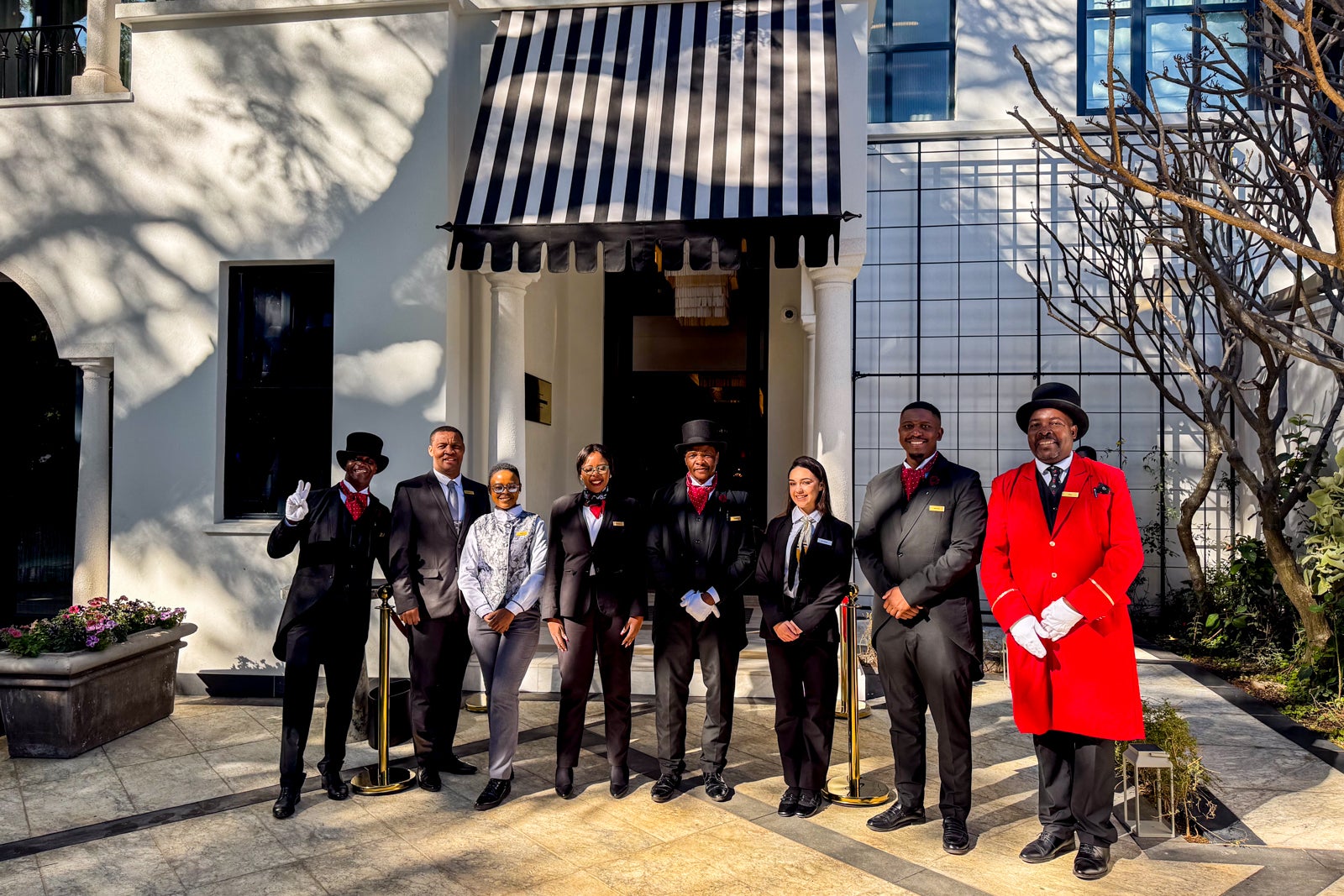
ERIC ROSEN/THE POINTS GUY
First impressions
The morning my long-awaited Johannesburg trip began, fate had a surprise in store: the grand opening of the Park Hyatt Johannesburg. A silent, electric glide in the hotel’s Mercedes EQS whisked me from the airport, delivering me to a red-carpet welcome. Not just a guest, buttheguest – the first. Scissors in hand, I snipped the ceremonial ribbon, stepping into a beautifully resurrected 1930s mansion. Inside, the air hummed with quiet luxury, the welcome a warm embrace of South African rooibos tea and decadent chocolate truffles.

ERIC ROSEN/THE POINTS GUY
The check-in was handled, bless technology, but stepping inside demanded a pause. The entry hall shimmered with intricate tile work, a silent symphony leading to a neat row of vases, each cradling pristine white orchids. A quick peek into the reception revealed a vibrant explosion: protea, birds of paradise, art pieces, and impossibly chic Assouline books clamoring for attention on the shelves. It wasn’t a hotel lobby; it was walking into the exquisitely curated living room of a ridiculously stylish friend.
Previous slide


Next slide
1 of 2
ERIC ROSEN/THE POINTS GUY
0
1
The city exhaled, releasing me through heavy doors and down a short flight of steps and into a secret. It was a midwinter morning, yet the central garden pulsed with a nascent warmth. I wandered past a miniature lily pond, its surface mirroring the sky, and a slumbering swimming pool, dreaming of summer. Later, the sun would pull me onto my patio, a chorus of birds serenading my jet-lagged soul in this urban oasis. But even paradise has its hum. Just south, a construction site throbbed with the city’s relentless energy, a concrete heartbeat you couldn’t entirely ignore. Thankfully, the rooms were a sanctuary, soundproofed against the urban roar.

ERIC ROSEN/THE POINTS GUY
The rooms
Imagine unwinding in one of our 31 distinctive havens. Choose from 26 beautifully appointed rooms, where breathtaking views await in 17, and private patios beckon from 18. For added indulgence, discover our two junior suites, or immerse yourself in the unique character of our three specialty suites: the stately Winston Suite, the romantic Rosebank Suite, and the rejuvenating Wellness Suite.
The rooms come in two categories: standard king rooms and those with pool views. Mine was the latter.

ERIC ROSEN/THE POINTS GUY
Imagine two cozy havens, each spanning 366 square feet. Now picture junior suites, echoing that footprint, but then… they open onto private gardens. Inside, instead of window seats, sink into plush sofas that define a separate, inviting lounge.
Imagine sinking into a cloud of crisp white linens, subtly piped for an extra touch of luxury. Forget counting sheep – lose yourself in the embrace of oversized pillows (and if Goldilocks isn’t happy, a pillow menu boasting eight decadent alternatives awaits!). Velvet headboards whisper of indulgence, while curated décor evokes the soul of South Africa. Each room unfolds a unique narrative, from the dappled shade of a “Forest” sanctuary to the thrill of an “Explorer” suite, each detail echoing the nation’s breathtaking landscapes and vibrant seas. Whether you dream among the trees, embark on a safari adventure, or drift away with the sea algae, prepare for a night immersed in the heart of Africa.
Previous slide




Next slide
1 of 4
ERIC ROSEN/THE POINTS GUY
0
1
2
3
Two mustard-colored armchairs, beacons of relaxation, stood sentinel at the foot of the bed, poised for the siren call of the wall-mounted 55-inch TV. Beneath the screen, a sleek, black marble credenza guarded a tempting cache: the minibar, promising complimentary refreshment and a siren song of chargeable delights.
Previous slide



Next slide
1 of 3
ERIC ROSEN/THE POINTS GUY
0
1
2
Stepping beyond the sleeping area, I discovered twin glass wardrobes, already embracing my unpacked luggage – a silent service perk. A vanity stood adjacent, a would-be desk in disguise. With no designated workspace, it became my impromptu command center, or, admittedly, the plush expanse of the bed readily served the same purpose. Downstairs, however, the hotel buzzed with inviting nooks, perfect for firing off emails amidst a more vibrant atmosphere.

ERIC ROSEN/THE POINTS GUY
Across the room, a theatrical flourish: a bathroom, swathed in black and cream marble, its curved walls a shimmering curtain of scalloped glass. At its heart, a deep, circular tub beckoned, promising sanctuary with a loofah and the soothing promise of muscle-melting bath salts.
Previous slide



Next slide
1 of 3
ERIC ROSEN/THE POINTS GUY
0
1
2
Beyond the sleeping area lay a haven of cleansing rituals: dual sinks gleamed beneath soft light, flanking ample vanities; a private water closet discreetly housed the toilet; and a glass-enclosed walk-in shower beckoned with the promise of cascading water from both overhead and hand-held fixtures. But the true indulgence lay in the bespoke bath products, each infused with the rich, earthy scent of oud, handcrafted locally, a fragrant testament to the region’s artistry.
Previous slide



Next slide
1 of 3
ERIC ROSEN/THE POINTS GUY
0
1
2
Beyond the main entrance, a pair of glass doors beckoned, leading to a secluded seating area overlooking the garden. I slipped outside, craving a breath of fresh air and a glimpse of color amidst the greenery. Though tempted to linger, the steady stream of passersby both staff and guests prompted me to draw the curtains, creating a private sanctuary. A tip for future visitors: request a room on the northern side of the hotel. You’ll be rewarded with enhanced privacy and a welcome buffer from the ongoing construction to the south.

ERIC ROSEN/THE POINTS GUY
Dining
Step into Room 32, Park Hyatt Johannesburg’s intimate dining jewel. From the first light of dawn at 6:30 a.m. to the last lingering bite at 10 p.m., Room 32 unfolds a culinary journey across South Africa. Breakfast dances until 10:30 a.m., lunch hums from noon to 3 p.m., and dinner sings from 6 to 10 p.m. Here, menus celebrate the country’s bounty, showcasing local produce and proteins. Sink into plush chairs at a cozy two- or four-top and watch the culinary artistry unfold behind a striking black onyx counter of the open kitchen.
Previous slide




Next slide
1 of 4
ERIC ROSEN/THE POINTS GUY
0
1
2
3
Wake up to a breakfast where indulgence begins: picture golden, flaky pastries fresh from our ovens, vibrant fruits bursting with flavor, and a tempting array of charcuterie and fine cheeses. Creamy yogurt awaits, the perfect canvas for your morning creation. But the temptation doesn’t end there. Dive into our hot dishes, where truffle-infused eggs crown slices of coal-baked sourdough, or embark on a culinary adventure with our South African-inspired shakshuka, featuring savory beef boerewors sausages simmered in a vibrant sauce of chipotle, tomato, red pepper, and tangy feta. All included with paid and points rates.
Previous slide


Next slide
1 of 2
ERIC ROSEN/THE POINTS GUY
0
1
Dinner is an exquisite affair, a symphony of flavors that dance on the palate. Begin with the ethereal cauliflower panna cotta, a silken indulgence swirled with pumpkin and onion puree, and crowned with delicate pea shoots ($9). For the main course, savor the succulence of Karoo lamb cutlets, perfectly paired with a vibrant lentil and asparagus ragout, punctuated by the freshness of peas and a mint salsa verde ($27). Conclude with a creamy milk tart, a comforting classic elevated by the warmth of cinnamon, the sweet crunch of honeycomb ice cream, and the nutty delight of almond crumble ($10). And to complement this culinary journey, explore a curated selection of South African wines, including the bright and lively grenache blanc and clairette blend from Swartland’s esteemed Mullineux winery.
Previous slide
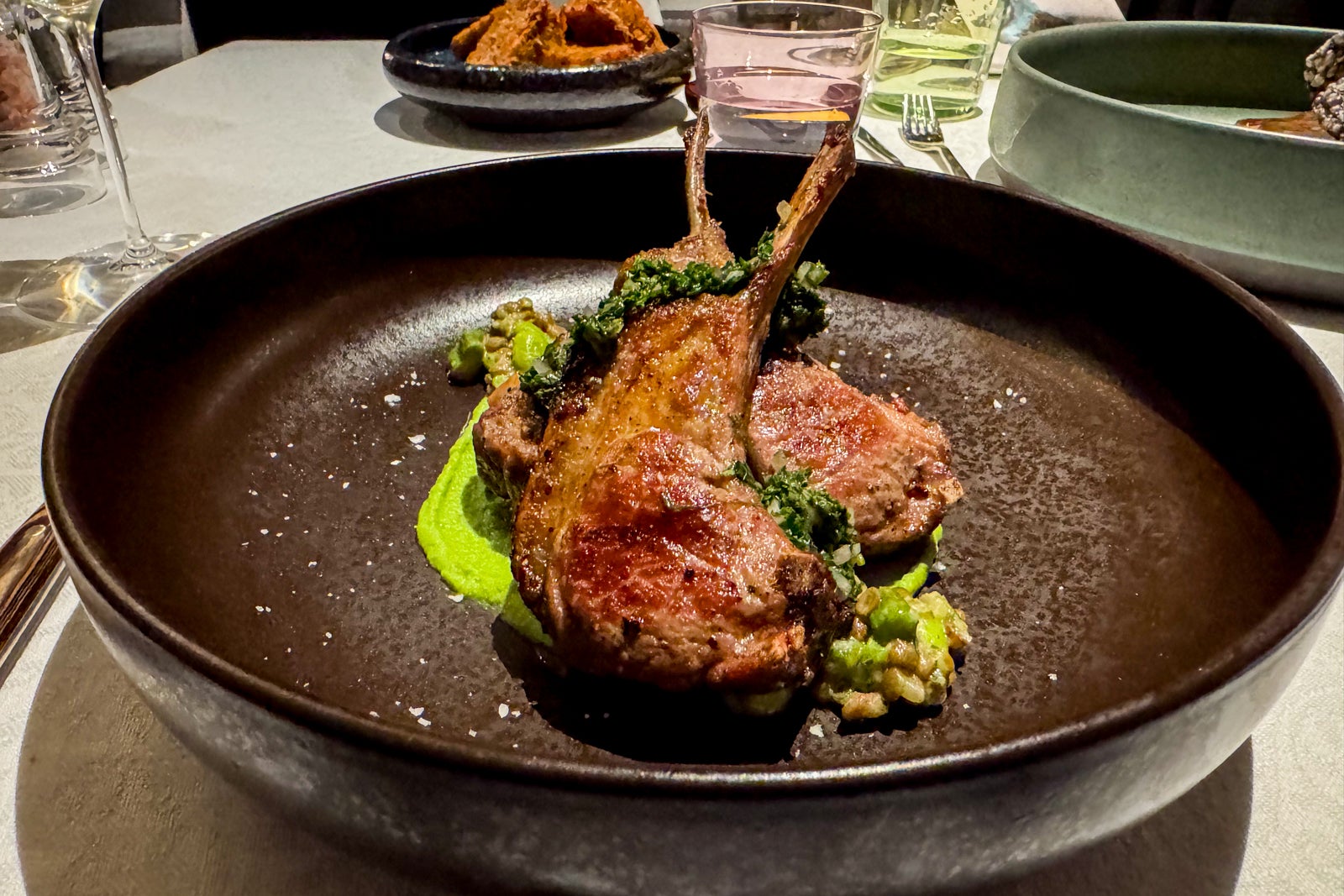

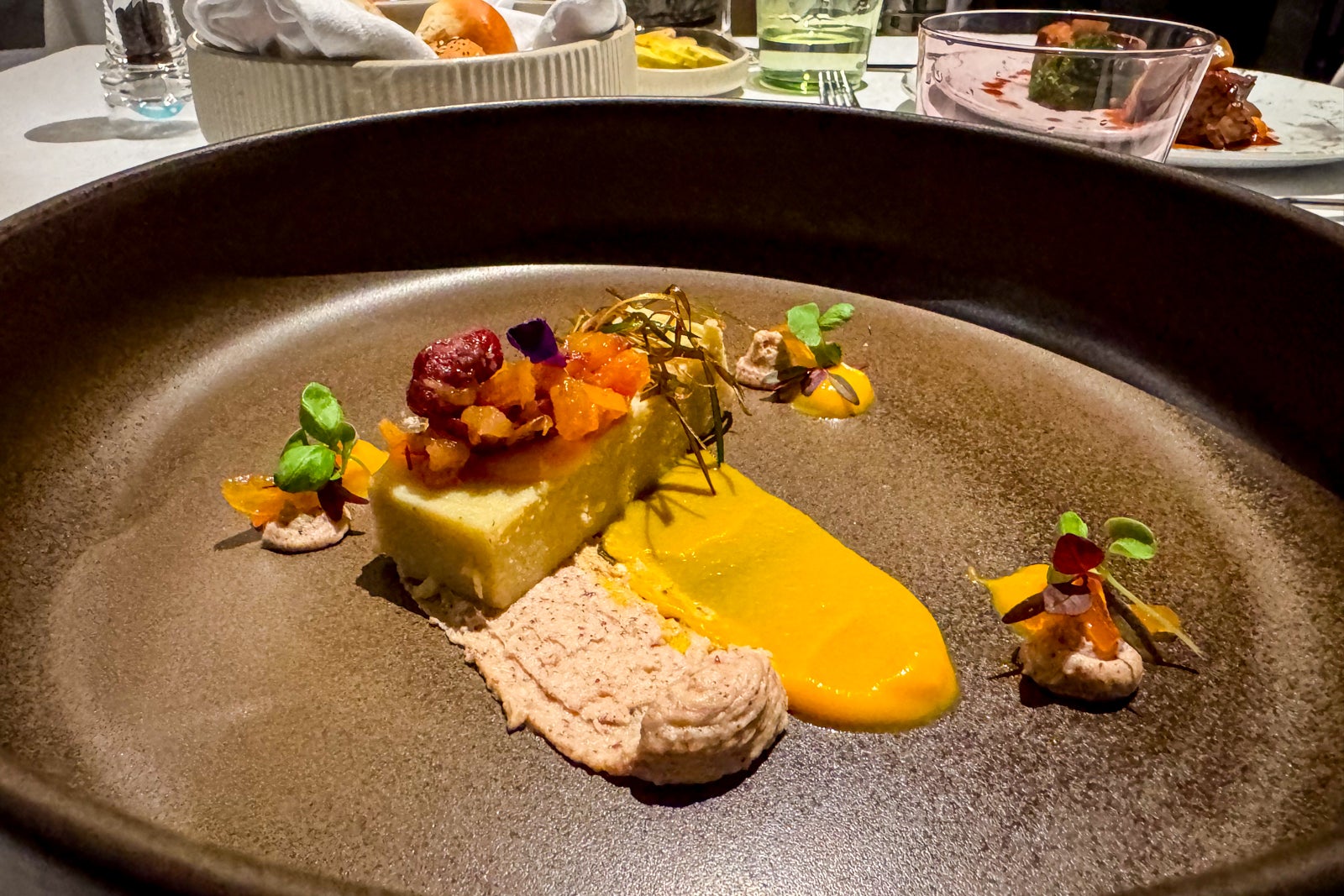


Next slide
1 of 5
ERIC ROSEN/THE POINTS GUY
0
1
2
3
4
Dine under the stars on our terrace, where warm heat lamps chase away the chill. A curated cigar lounge completes the experience, available during restaurant hours.
Previous slide

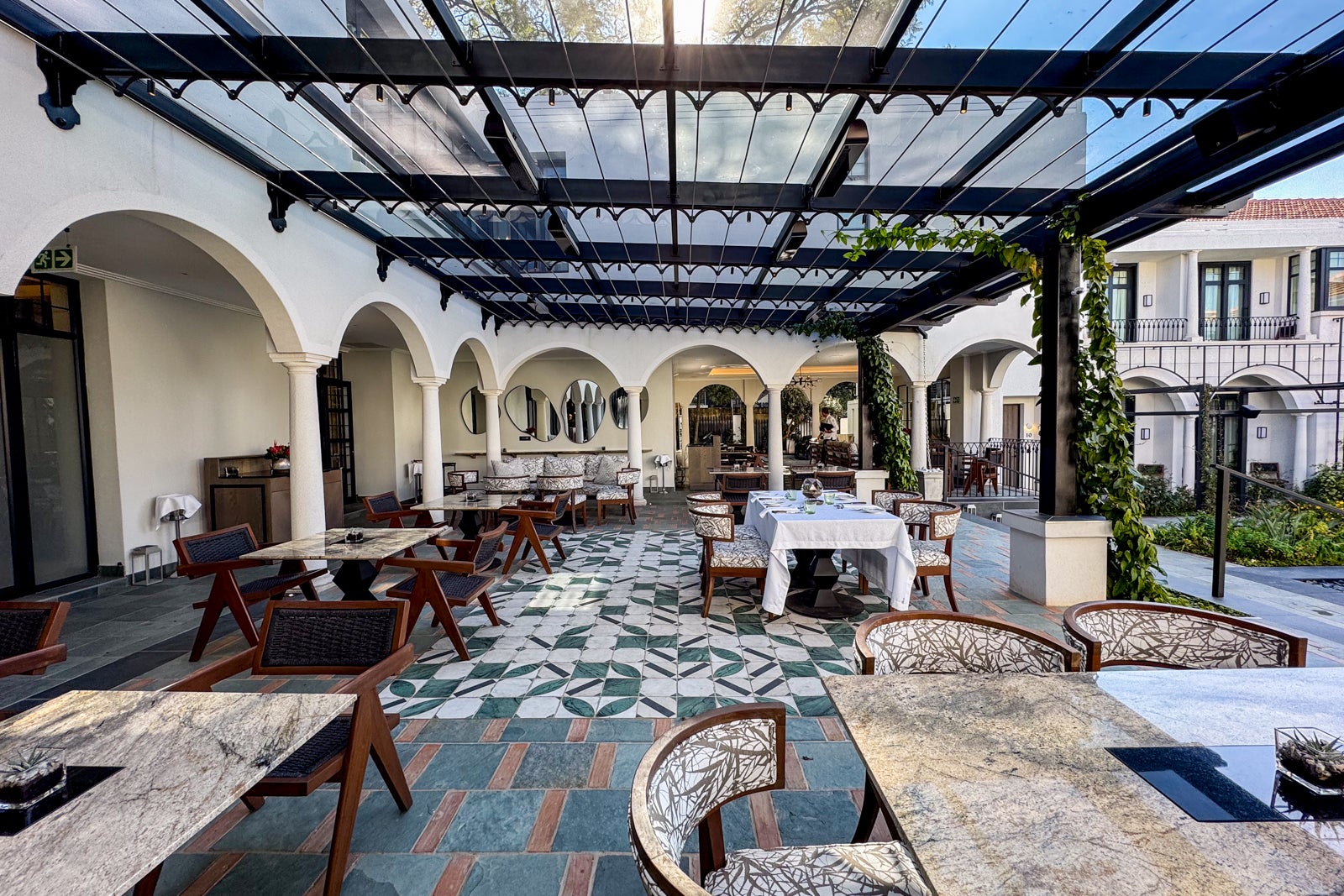
Next slide
1 of 2
ERIC ROSEN/THE POINTS GUY
0
1
Just steps from the reception desk, a warm and inviting lounge beckons, its doors open from the early hour of 6 a.m. until midnight. Sink into plush seating and unwind with handcrafted cocktails and delectable light fare. Tempt your palate with smoked olives or fire-roasted nuts, both priced at $9, or savor a flavorful falafel sandwich for just $11.
Previous slide


Next slide
1 of 2
ERIC ROSEN/THE POINTS GUY
0
1
Step into a world of whispered secrets and intimate gatherings. Adjacent to the reception, a secluded, tented majlis awaits, accommodating a privileged dozen. Here, familiar comforts mingle with daring new flavors. Indulge in lounge favorites alongside exclusive creations like the smoked beef tartare ($11), a smoky symphony for the palate, or the elevated classic, the club sandwich ($13), reimagined for discerning tastes.
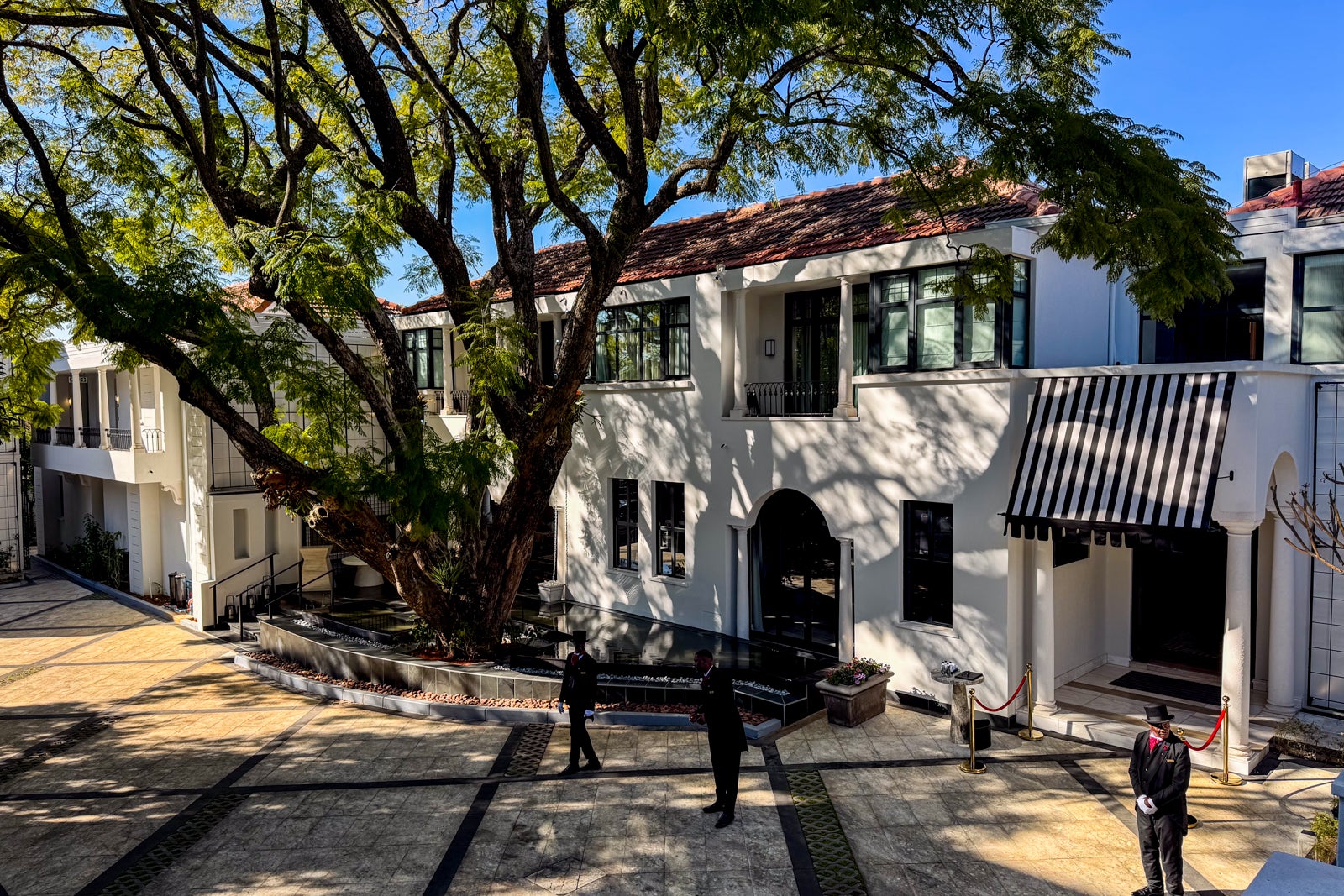
ERIC ROSEN/THE POINTS GUY
Amenities and service

ERIC ROSEN/THE POINTS GUY
“Imagine yourself sinking into the warm embrace of our heated pool. Don’t forget your swimsuit! Find a secluded lounger hidden amidst lush foliage, your own private oasis awaiting.”
The hotel’s wellness center remains shrouded in mystery, its promised spa details locked tighter than a vault. We pressed for answers, but the staff offered nothing, leaving us dreaming of the pampering possibilities to come.
- The hotel’s fitness center is small but equipped with Technogym cardio and weight equipment. Forget generic service. Here, smiles are genuine, attentiveness is an art. From doormen to directors, every staff member delights in exceeding expectations, crafting personalized itineraries and securing impossible reservations with effortless charm. Consider them your cheerful concierge team, dedicated to transforming your stay into an unforgettable experience.
Previous slide


Next slide
1 of 2
ERIC ROSEN/THE POINTS GUY
0
1
Location and logistics
Nestled in Johannesburg’s sophisticated Rosebank, the Park Hyatt Johannesburg places you directly at the heart of the action. Step outside and find yourself immersed in a vibrant tapestry of shops, restaurants, and art galleries surrounding the namesake mall. Explore with confidence; Rosebank’s pedestrian-friendly streets invite you to discover its charm on foot.
Touchdown at O.R. Tambo (JNB)! A quick 30-50 minute car ride separates you from hotel bliss. Forget airport stress; ride-hailing is safe, readily available, and surprisingly affordable – expect to pay just $12-$20 each way. Your South African adventure starts now!

ERIC ROSEN/THE POINTS GUY
What it costs
Escape to Johannesburg’s oasis of luxury, the Park Hyatt, a coveted World of Hyatt Category 6 haven. Unlock its doors for as little as 21,000 points or venture in for a fixed rate of 25,000 Hyatt points on select nights or starting at $450. Your South African escape awaits.
Unlock Luxury at the Park Hyatt Johannesburg: Maximize Your Stay with the Right Credit Card.
Dreaming of opulent suites and unforgettable experiences at the Park Hyatt Johannesburg? Supercharge your stay and unlock extra perks by using the right credit card. Forget ordinary rewards; we’re talking elite status upgrades, points that transform into future getaways, and exclusive benefits that elevate your experience from remarkable to extraordinary. The secret? Choosing a card designed for Hyatt enthusiasts.
Unlock a world of elevated travel with the World of Hyatt Credit Card (see rates and fees). Immerse yourself in luxury, earning 4x points on every Hyatt stay. Instantly elevate your experience with automatic Discoverist status, plus a jumpstart toward elite tiers with 5 annual elite night credits. Your journey to exclusive rewards begins here.
Unlock a world of elevated travel with the World of Hyatt Business Credit Card. Immerse yourself in luxury, earning 4x points on every dollar spent at Hyatt’s exquisite hotels and resorts. Instantly enjoy Discoverist status, plus accelerate your journey to elite tiers with 5 elite night credits for every $10,000 you spend annually. See rates and fees and elevate your business travels today.

ERIC ROSEN/THE POINTS GUY
Accessibility
Navigating the property is a breeze for guests with mobility devices, starting with the ramp connecting the driveway to the main building. Both the restaurant and lounge boast zero-entry access. For poolside relaxation and convenient access to the accessible Room 8, simply follow the path around the back of the property, past the wellness center. Room 8 offers standard accessibility features, including bathroom grab bars, and can be equipped with vibrating pillows for guests with hearing impairments. Please note that all other guest rooms and suites are accessible via stairs only.
As always, be sure to contact the hotel directly to ensure you can book accommodations that meet your specific needs.
Bottom line
Johannesburg’s hotel scene just got a serious upgrade, and Park Hyatt is leading the charge. Forget sprawling mega-resorts; this intimate gem delivers personalized service that makes you feel like royalty. Think sleek, sophisticated design from the lobby to your room – a haven of understated elegance. The Park Hyatt Johannesburg isn’t just a place to stay; it’s an experience.
Johannesburg doesn’t come cheap, especially when nightly rates hover around $500. But for an unforgettable experience, look no further. World of Hyatt members, take note: with award nights practically begging to be booked, this is your chance to snag a stay in one of the city’s most extraordinary escapes.
Related reading:
- The best credit cards to reach elite status
- Best hotel rewards programs in the world: Which one is right for you?
- Best Park Hyatt hotels, according to Globalists
- Best hotel credit cards
Thanks for reading First in: The new Park Hyatt Johannesburg


